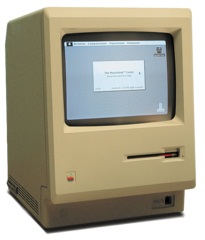The Motorola 68000 was the most successful 16-bit processor in the computer industry during the "16-bit era". The M68000 is a unique processor as it has the 32-bit combined within the processor as it was built for the purpose on forwards compatibly. The M68000 had variants that made the processor designed to be compatible to the original. The M68000 series had newer and faster variants like the Motorola 68020 32-Bit processor, but also had cost reduced variants like the M680EC20 as well. The M68020 is the enhanced 32-bit processor that contains a FPU coprocessor and has a clock rate two times faster then its predecessor. The M680EC80 however, does not contain the FPU coprocessor and use the 24-bit address bus.
Motorola 68000 16/32-bit CPU
http://cdn.cpu-world.com/CPUs/68000/L_Motorola-XC68000L%20(SN807).jpg
Many 16-bit machines have been widely used around 1987 until around 1996 as most computers started on using CD-ROM technology, which are more advanced and evolved from the 16-bit era. The Windows 95 is a example when the old Windows 3.1 - which is a 16-bit based operating system - where the applications and 16-bit architecture moved on to 16-bit to to 32-bit. However other 16-bit machines had the CD-ROM drive but weren't commonly found as CD-ROM was expensive than the floppy disks and microcassette tapes etc. The 16-bit CD-ROM powered machines include gaming consoles like Philips CD-i, Commodore CDTV, Sega Mega-CD and the Neo Geo CD. Most of those 16-bit CD-ROM consoles used the M68000 CPU, even most 16-Bit based arcade games used it as well.
Sega Mega Drive II + Sega Mega-CD
http://en.wikipedia.org/wiki/File:Sega-CD-Model2-Set.png
The Apple Macintosh 128K is a good example of a 16-bit computer and made a market success near the mid-1980s, and other variants of the Macintosh have been created for generations. The only drawback with the Macintosh 128K is the low RAM, high introductory price and the due to the fact that the Mac 128K only uses monochrome display.
Apple Macintosh 128K

.jpg?1335860595810)

